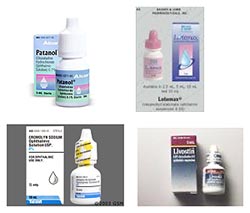|
|
|
 |
 |
 |
 |
 |
 |
 |
 |
 |
 |
 |
 |
 |
 |
 |
 |
 |
 |
 |
 |
 |
 |
 |
 |
 |
 |
 |
 |
 |
 |
 |
 |
|
OCULAR ALLERGIES Welcome to Atlanta, the Allergy Capital of the Universe! We have THE most beautiful springtime of any place in the world. Our springtime pollen counts defy the imagination…but it doesn't end there. Every season here seems to have something to be allergic to. And the eyes have had it…swollen, itchy, red, and runny. Fortunately, there is help. There are several excellent prescription ocular allergy relief medications available. Dr. Jeruss is an expert at treating ocular allergies. We'll see you in March!
GLAUCOMA There are basically 2 types of glaucoma: open angle and closed angle. Primary open angle glaucoma is an eye disease that causes gradual and permanent blindness. Vision loss begins in the periphery, where it may go unnoticed until it advances centrally. This loss is caused by damage to the optic nerve. This is the most common type of glaucoma, affecting about three million Americans.
It was once thought that high pressure within the eye, also known as intraocular pressure or IOP, is the main cause of this optic nerve damage. Although IOP is definitely a risk factor, we now know that other factors must also be involved because even people with "normal" pressure can develop glaucoma. Some of these risk factors are age, African-American heritage, high myopia, thin corneas, diabetes, hypertension, family members with glaucoma, eye injuries, and steroid users. The eye pressure rises because more fluid is being produced than can drain out of the eye. There are no pressure receptors in the eye…another reason that this disease often goes unnoticed for years. It is estimated that half of those who have glaucoma may not know it.
This type of glaucoma usually responds well to medication, especially if caught early and treated. Normal tension (pressure) or low tension glaucoma is characterized by damage to the optic nerve even though the IOP is not high. Those at higher risk for this type of glaucoma are people with a family history of normal tension glaucoma, Japanese ancestry, and people with a history of heart disease, such as irregular heart rhythm. Angle closure glaucoma is also known as acute glaucoma or narrow angle glaucoma. It is much more rare and is very different from open angle glaucoma in that the eye pressure usually rises very quickly. This happens when the fluid drainage canals get blocked. With angle closure glaucoma, the angle formed between the cornea and the iris is not as wide or open as it should be. When the pupil dilates, as happens when entering a dark room, the outer edge of the iris bunches up and blocks the drainage canals. The pressure can then suddenly and dramatically increase to an extremely high level, causing symptoms such as eye pain, headache, nausea, blurred vision, and haloes around lights. A simple test can be used to see if your angle is normally wide or abnormally narrow. Treatment of angle closure glaucoma usually involves surgery to remove a small portion of the outer edge of the iris, called an iridectomy. This helps unblock the drainage canals so that the extra fluid can drain. |
||||||||||||||||||||||||||||||






